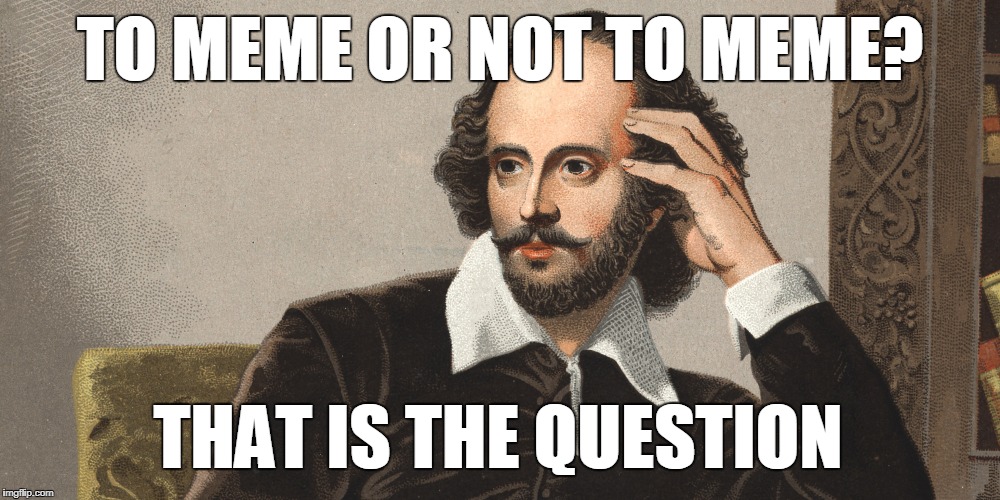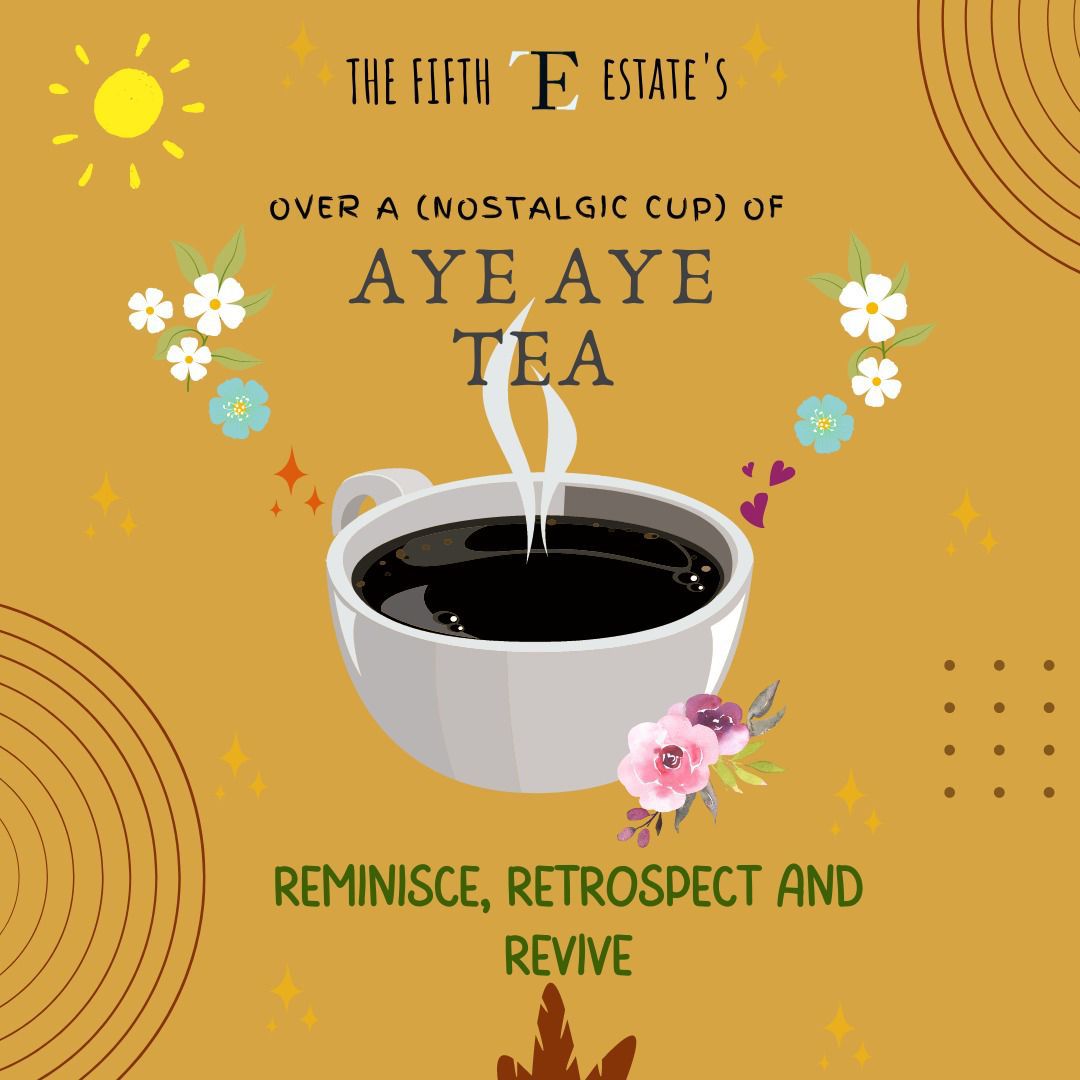I hope everyone can appreciate the remarkable irony of an article on memes. Just pause to consider how the entire purpose of memes is to reduce communication using actual words, and instead cater to our increasingly shortening attention span. However, the fact that a gif-set with a one-liner is enough to make me laugh, or nod sagely while muttering ‘Mood’, or even laugh while nodding sagely, makes me wonder if the Digital Age is all that it was cracked up to be. And I believe this warrants some pondering over. If we’ve gone from quoting Wilde and Shakespeare to sending memes, has evolution been a scam?
But then again, the fact that people from all over the world, despite differences in nationality, language, ethnicity, culture, religion and so on, can laugh over the same joke and understand the same references bears testimony to the heights of global connectivity that we have achieved as a species.
Memes are basically just inside jokes on the internet. And with a relatively good network connection and a smartphone, anyone can subscribe to the internet culture. Although this group is heavily concentrated amongst a particular age range, people of all ages are increasingly starting to use meme references in their everyday communication. This is particularly evident when it comes to political campaigns. The mere fact that politicians have taken to social media and that ‘trolling’ is an active political tool speaks volumes about the reach and impact of memes.

Social Media has, more often than not, become the primary mode of communication in the 21st century. This has been enabled mainly due to the exponential growth of technology since the turn of the century. Technological advances have impacted almost every aspect of our day to day life. This also includes language. Visual content has always been more appealing than other forms of communication such as letters and articles. It is easy to understand, provided that one is adequately educated about the particular context. This ease of consumption is exactly the reason why memes have become so overwhelmingly popular and widespread today.
According to Richard Dawkins, the man who coined the term, ‘memes’ are a unit of cultural inheritance.
And even though some of the boomers may disagree, memes are an inherent part of our spoken language and culture today. Its linguistic significance lies in its ability to facilitate the expression of a wide range of emotions in the shortest time span.
Although memes have been around quite a while (since the 1980s according to one source), it has exploded in popularity and use only over the last decade or so. This also means that their average lifespan has greatly reduced. A meme may remain popular for about a week to a month. The very rare might survive to become a constant reference. An average meme gets circulated pretty quickly and, within a day or two, becomes highly used and referenced. Visual content spreads faster than almost any other form of media today, and this also implies that it is easier than ever before to misinform and perpetuate propaganda and even outright lies. This is where caution is advocated.
For instance, the WW3 memes that trended on Twitter shortly after the US killed top Iranian military commander Qasem Solaimani reduced an international conflict to nothing more than a joke that only the privileged could find funny. Similarly, the increasingly racist jokes being popularized on the Internet following the outbreak of the Coronavirus provide yet another example of meme culture trivializing important issues.
Not all memes are about harmless fun. Misogyny, racism, homophobia and other vile forms of ‘dark humour’ can be expressed through jokes. And yes, hate exists on the internet in various other forms too. But memes have the uncanny ability to reach a really large audience in a matter of hours.
And the fact that such jokes may be using a common template makes it easier to assume that it is harmless. Although such accusations will receive a blanket response of ‘It’s just a meme’ or ‘Learn to take a joke’, it is important to understand how public perception gets influenced by viral visual cues.
Memes can range from being highly contextual to really generic ones that anyone can understand, no prior meme knowledge required. Not all memes need to be necessarily global in nature. After all, by their very nature, they are inside jokes that are meant to be contextual. Any in-group will have their own set of jokes, references and symbols to which they attach meaning. In some ways, this further entrenches the digital divide by expanding into a cultural divide. If one does not have the access, time or energy to keep up with the latest memes, you may find yourself lost during social interactions.
This ‘in-group vs out-group’ can be clearly seen in the case of school and college meme pages including our very own IITM meme pages on Instagram, like @insti_comics and @enthuisallyouneed. None of those images would make much sense to someone who is not part of the IITM community, mainly the student body.

And yes, that was my exact same reaction too. Unless you’re an offended E-Cell member, in which case, I’ll pray for you.
The point here being: there is barely any context and yet we all get the joke.

And here we see an example of how not all memes are meant to be funny. Some are just plain depressing, but still fits the criteria of visual communication.
Memes, like most other internet things, go through phases. And currently, all of insti is focused on one thing.

And yet, none of these compares to the meme-fests that WhatsApp groups witness during crunch time. When everyone is stressed out about exams, the few moments of respite that we get telling each other how underprepared we are feels rather good. And there’ll always be that one person ready to illustrate every remark with just the right meme.
In some ways, some of these memes are just sad. Making and laughing at memes is almost a way of venting. It is a form of coping and accepting the status quo while feeling a momentary sense of vindication.
At the end of the day, meme templates are commonly used and edited to suit a variety of situations and it makes communication, if I’m being honest, fun.
Having gif wars on WhatsApp groups, finding the right stickers to reply with, having entire conversations in meme references is, at the most basic level, really fun. While it doesn’t exactly replace other forms of communication, it adds a lot of flavour to mundane conversations.
So, whilst a lot of people from the parental generation may complain, I am here for the memes. I don’t know about you, but all I’m saying is, if I had to pick between writing long letters and actually penning down my emotions and genuine thoughts, or instead, using self-deprecating and other forms of humour to deflect from having to have real conversations, I know what my choice would be. And it’s not only because I do not have quills and parchment. Just saying.





Could have been more introspective.
https://en.m.wikipedia.org/wiki/Meme